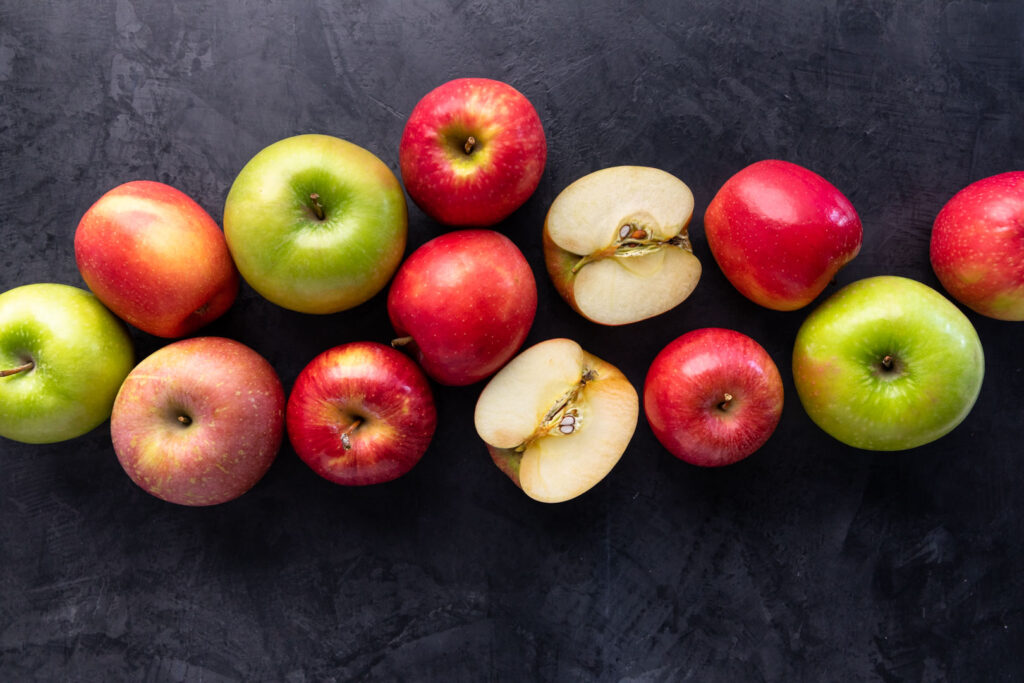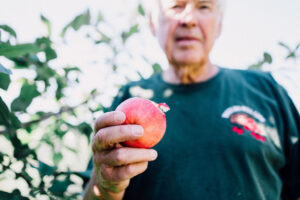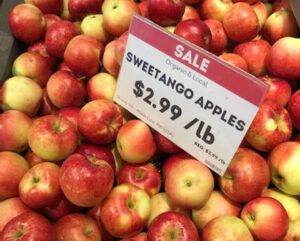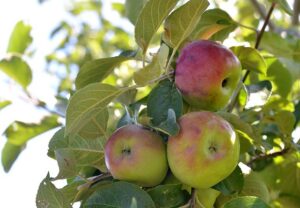Local Apples: Best Uses for Each Variety

Apple season is sure to stir up sweet memories — visits to the orchard, crisp autumn evenings, and delicious apple dishes. It may also stir up some questions. With so many varieties, how do you tell which apple is best for snacking versus apple pie or cider? We break down local apples and the best uses for each variety.
Local love
At Lakewinds, we’re proud to offer apples from three amazing local Minnesota orchards: Whistling Well in Hastings, Breezy Hill in Maple Lake, and Cedar Hill in Hutchinson. These farms are committed to growing delicious, sustainable apples.
Buying local is particularly important because your purchase supports farmers and the local economy, reduces climate impact and food miles, and ensures that you’re getting the freshest product.
You may notice that many of our apples are grown using integrated pest management (IPM). IPM uses beneficial insects to protect crops and uses pesticides only as a last resort. This allows growers to produce healthy, abundant yields while minimizing their reliance on chemical amendments.

Seasonal varieties
Here are some of the most popular local apple varieties. Since the timing for apple harvests depend on ripeness and weather, these apples become available at different times in the season. Keep your eyes peeled all season long for your favorites!
Note: As a general rule, apples store best at a temperature around 33-38° F. Store them in the crisper drawer of your refrigerator in either a plastic bag with holes or layered with a damp paper towel.
- SnowSweet
- Overview: Snacking, fruit salad, and snack trays.
- Description: This late-season apple has a beautiful bronze-red blush exterior and dazzling white flesh. Snow Sweets don’t oxidize as quickly as other apples, so the inside stays white and crisp longer than other varieties. This makes them ideal for snacking and storing.
- Flavor: Sweet and slightly tart, with substance.
- Storage: Up to two months in the fridge.
- First Kiss
- Overview: Snacking, pies, sauces.
- Description: This bright, red apple is derived from the Honeycrisp and is similarly sweet and crisp. As the name implies, these are one of the first apples to come into season.
- Flavor: Lively and tart.
- Storage: Up to five months in the fridge.
- SweeTango
- Overview: Snacking, pies, tarts, crisps, and sauces.
- Description: Known for their crunch, these sweet and citrusy apples are a crowd pleaser. They are ready at the beginning of apple season and are great for snacking and baking.
- Flavor: Citrus, honey, and spice.
- Storage: 4-6 weeks in the fridge.
- Haralson
- Overview: Snacking, tarts, sauces, especially good for apple pie.
- Description: Haralsons are named for a former superintendent of the University of Minnesota’s Horticultural Research Center. They’re crisp, tart, and juicy. Look for them later in the apple season.
- Flavor: Bright and tart.
- Storage: 4-5 months in the fridge.
- Zestar
- Overview: Snacking, sauces.
- Description: This apple is best known for its incredibly bright and sweet taste and its long storage life. If you’re looking for a zesty, sweet crunch, try the Zestar!
- Flavor: Zesty with hint of brown sugar.
- Storage: Up to two months in the fridge.
- Chestnut Crab Apple
- Overview: Snacking, cider, jelly.
- Description: These cute little apples are ready in September and are delicious for snacking, cider, and brandy. Unlike some of their sour and tart crab apple cousins, the chestnut crab apple is sweet and very pleasant.
- Flavor: Tart and sweet.
- Storage: Anywhere from a few weeks to two months in the fridge.
Shop confidently

This list covers the most popular local varieties, but you’ll likely see others at the co-op from other states throughout the year. Don’t hesitate to try any apples that look enticing — all are good choices at this time of year!
Learn more about the impact of supporting local food and the difference that your dollar can make.

